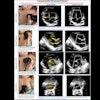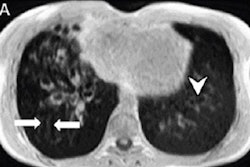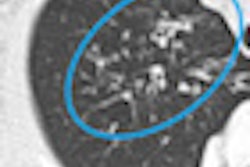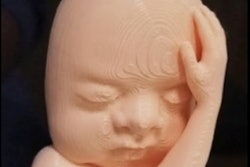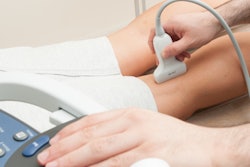
Ultrasound can help clinicians identify children with cystic fibrosis (CF) who are at risk for developing cystic fibrosis liver disease, according to a study published online February 12 in the Journal of Pediatrics.
The study findings could help clinicians develop new treatment protocols to prevent the disease, wrote a team of researchers led by Dr. Michael Narkewicz of the University of Colorado School of Medicine and the Children's Hospital of Colorado, both in Anschutz.
"As we develop new therapies for cystic fibrosis and for other liver diseases, it is critical that we better understand which patients with cystic fibrosis are at higher risk for cystic fibrosis liver disease," Narkewicz said in a statement released by the university.
Cystic fibrosis affects the lungs and pancreas, but it can also affect the liver, the researchers noted. Advanced cystic fibrosis liver disease scars the liver and occurs in about 7% to 10% of patients with cystic fibrosis, they wrote. Although the exact cause of advanced cystic fibrosis liver disease is not known, only people with cystic fibrosis develop it.
The study included 171 children between the ages of 3 and 12 with pancreatic insufficient cystic fibrosis without known cirrhosis, Burkholderia species infection, or short bowel syndrome. Each of the children underwent grayscale and Doppler screening ultrasound liver exams; the echogenicity of the exams' was assessed using a four-point scale.
Of the 171 study participants, 55 had heterogeneous liver ultrasound patterns, which indicate disease, and 116 had normal ultrasound patterns.
The team found that children with a heterogeneous liver ultrasound pattern had a 9.1-fold increased incidence of a nodular liver pattern compared with those children with normal liver ultrasound patterns (23% versus 2.6%).
In a secondary finding, the researchers discovered that children with heterogeneous ultrasound patterns had higher enzyme-to-platelet ratios than those with normal patterns:
- Alanine aminotransferase (42 U/L versus 32 U/L; p = 0.0033)
- Gamma glutamyl transpeptidase (36 U/L versus 15 U/L; p < 0.001)
- Aspartate aminotransferase (0.7 versus 0.4 U/L; p < 0.0001)
The study results underline that ultrasound offers an effective way for clinicians to identify children at higher risk of advanced liver disease, the team concluded.
"This is the first large multicenter study of ways to predict which children with cystic fibrosis are at higher risk for advanced liver disease," Narkewicz said. "The findings show that we have found an important way to project which patients might develop cystic fibrosis liver disease. It also gives us clinical therapeutic targets for interventional therapies that could prevent the development of this liver disease."

